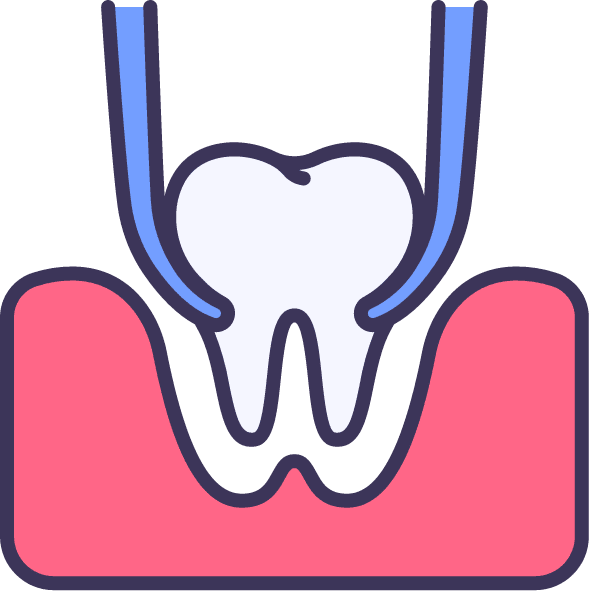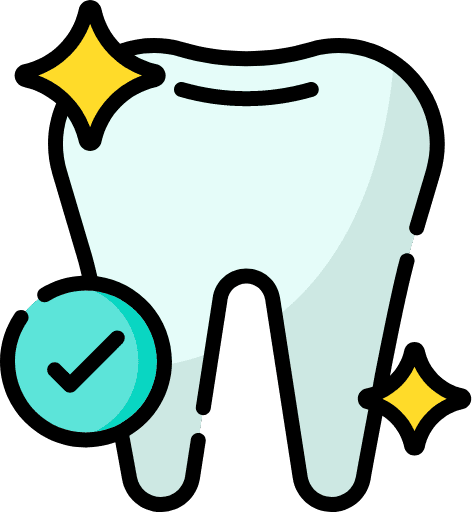Tooth Extraction in Aberdeen
How to prepare for Tooth Extraction & What is the recovery process
A tooth extraction, one of the most frequent dental procedures, can get rid of an unrestorable tooth prone to infections and enhance your overall oral health by preventing potential infection. Tooth extraction and removal involves completely removing your tooth from its socket. This is sometimes referred to as “pulling” a tooth.

When is it advised to have a tooth extracted?
Tooth removal dentists and healthcare professionals prefer to preserve natural teeth. However, there are situations when additional restorative measures, like dental crowns or fillings, are required. Tooth extraction dentists in Aberdeen suggest that most tooth extractions are necessary due to severe tooth decay, infections, or crowding. One or two teeth may need to be extracted to make way for the other teeth as they move into position for those who obtain braces. Additionally, compromised teeth may need to be removed by a tooth removal dentist to maintain oral health for patients receiving chemotherapy or preparing to get an organ transplant.

What are the types of tooth extraction?
There are two types of tooth extraction; simple and surgical. Dentists suggest the treatment after evaluating the condition of your tooth and how it is affected.
1 Simple Extraction
In this process, before extracting the tooth, dentists will give you a local anaesthetic, numbing the area around your teeth so that the process will only cause you to feel pressure rather than pain.
2 Surgical removal
In this extraction, you will most likely receive both intravenous and local anaesthetic, the latter of which calms and relaxes you. Depending on your medical history and other factors, you might need general anaesthesia. You won’t wake up during the treatment if you receive general anaesthesia.
The regular dentist or oral surgeon will make a small incision into your gum. Before they can extract your tooth, they might need to remove the bone surrounding it, or both.

How to get ready for your procedure will be explained by your dentist
Your dental and medical history will be questioned. Any medical issues, allergies, or recent surgery must be disclosed to the dentist, along with any medications you take. Your dentist will review the procedure with you, including any potential risks. You should inform your dentist if you have; an underlying cardiac condition, diabetes,liver illness, thyroid condition, kidney disease, a broken heart valve, prosthetic joints, adrenal illness or an immune system compromised by a history of bacterial endocarditis.
What to expect during tooth extraction & removal?
Your infected tooth and the gum tissue around it are first given topical anaesthetic to make them feel better and to avoid the discomfort of needle prick, topical anaesthetic is followed by administration of local anaesthetic injection. Using specialist dental tools, your dentist will gently loosen your tooth and carefully remove it from its socket. When your tooth is severely decaying or has broken off at the gum line, your dentist may occasionally need to create incisions in your gums to access it. The socket is cleansed and sterilised after your tooth has been extracted. Your dentist can occasionally implant a dental bone transplant to help stop jaw bone loss, depending on your treatment plan. Finally, stitches may or may not be applied to aid in the healing process.


What are the risks of tooth
extraction & removal?
Certain risks are associated with tooth extraction, but if your dentist recommends treatment, the advantages will likely outweigh the slight possibility of difficulties. The socket, or hole in the bone where the tooth was extracted, usually produces a blood clot on its own after tooth extraction & removal. The term dry socket refers to a situation in which the blood clot either does not form or dislodges, exposing the bone inside the socket. If this occurs, the tooth removal dentist will cover the region with a sedative dressing for a few days to protect it. A fresh clot will form throughout this period.
Recovering after tooth extraction & Removal
Most people can resume their regular activities on the same day. It would only take a few days to recover if the surgical extraction was complicated.
If you received a local anaesthetic, it could take a few hours for your mouth to feel normal again. Once the anaesthetic wears off, your mouth can feel sore. You shouldn’t consume any hot items until it returns because doing so could cause you to burn or scald your mouth. Be careful not to bite your tongue, especially when speaking, drinking, or eating. To stop the bleeding, take as much rest as possible.

Some people experience pain that worsens three days after the treatment but subsides again seven to ten days later. Contact your dentist if you’re experiencing significant discomfort that only gets worse. Your dentist will ensure no other cause of the pain, such as an infection.
